Spiral albuka - cultivation and reproduction
Content:
The unusual albuka plant attracts the attention of everyone who sees it for the first time. And it's all about the original shape of the leaves, similar to a spiral. Florists believe that this configuration of leaves helps the plant to adapt to dry air, it is easier to endure heat, does not require frequent watering and grow in small containers.
Growing and caring for spiral albuka at home
The herbaceous plant albuca spiralis is from the asparagus family. Growing area - South America. This bulbous plant throws out a peduncle with white flowers, for which this name was obtained, which means to shoot white.
The plant is used to decorate the garden, courtyard, create various compositions in the room.
The albuka flower differs from other domestic plants in its life cycle. In the fall, the growing season begins, when the flower acquires lush foliage. The cycle continues until spring. In summer, when the albuca fades, the transition to the resting stage begins. The leaves turn yellow and dry out.
Summing up the care, some features should be noted:
- summer care: abundant watering, feeding with phosphorus and potash fertilizers;
- autumn: keeping at 25 ° C, occasional watering;
- winter care: no watering, content temperature 18 ° C;
- spring care; regular watering, the introduction of nitrogenous fertilizing.
Growing conditions for spiral albuka
With the right actions, the spiral albuka will create a special atmosphere in the room.
Air temperature
This indicator is very important for the growth and development of a heat-loving flower. On hot days, the temperature should be kept at 25-28 ° C, in cold weather 13-15 ° C. For a normal color, temperature drops are introduced in November-December. During the day, the thermometer rises to 10-15 ° C. At night, 6–10 ° C.
Lighting
The albuca flower loves light. The more sun it receives, the more actively it will grow, the better it will develop, and the duration of flowering will increase. The brightest lighting on the east, south and west windowsills. But due to the fact that the growing season takes place in winter, the plant needs additional lighting in the form of a phytolamp. Enough if you create illumination for 14 hours.
How to water
Albuka does not need increased watering, especially if the liquid stagnates. This often leads to rotting of the root system and poor foliage curling. The flower is watered abundantly after the top layer of the soil dries. For irrigation, take the settled water.
When to plant and is it possible to grow not at home
The heat-loving albuka plant grows better in the room. But under good climatic conditions, the flower is planted in the open field.If a seed planting method is chosen, the crop is planted in December. The bulbs are planted in March.
Choosing a place for planting and preparing the soil
The flower should grow in light, loose soil. This is a ready-made substrate for cacti or other succulents. Or self-prepared soil. A mixture of earth, humus and sand is taken in a ratio of 1: 1: 2. For disinfection, the soil is calcined in the oven. Drainage is needed at the bottom of the pot.
During active growth and flowering, albuka is fed with complex mineral fertilizers for succulents.
Transplant features
The culture is transplanted once every 2-3 years. November is best suited for these purposes. The flower is transferred to fresh soil, and, if necessary, to a larger pot. A nutritious soil is selected, light and loose, well permeable to oxygen and water. A ready-made composition for succulents is more suitable.
Step-by-step transplant procedure:
- A drainage, 2 cm high, is placed at the bottom of the pot. It is pre-disinfected. To do this, ignite in an oven at 220 ° C or pour over boiling water.
- The second layer is laid out with a height of 3 cm - prepared soil.
- The onion is removed from the old pot. The roots are carefully examined. In case of serious damage, the root processes are removed, the rot is cleaned off with a knife. Then the roots are disinfected in a weak solution of potassium permanganate.
- The bulb is placed in a pot on the ground, covered with earth, leaving more than half of the head above the ground.
After transplanting, the container is placed on a lighted windowsill. Watering resumes.
How does the flowering of a plant
Albuca looks attractive during the flowering period. Yellow-green flowers are collected in carpal inflorescences, located half a meter from the base. They have a pleasant smell, which intensifies in the evening.
Features of flowering and dormant period
Flowering stretches from April to May for 2–2.5 months. At the end of flowering, seed pods appear.
After this, the albuca enters a resting phase. The leaves fall, often completely fall off. Watering stops. The flower is determined in a shaded place and rests there. At the end of dormancy, young leaves appear. Care, watering, feeding is resumed. The flower is transferred to a lighted place.
Reproduction methods
There are two ways to reproduce the southern flower: seeds, bulbs - babies.
Seed propagation
The method is less popular. And although it is uncomplicated, the harvested seed material has a good germination capacity for only six months. If you miss the deadline, the seed may not sprout or lose its parental qualities.
Algorithm for planting an albuka from seeds:
- The collected seed pods are kept for 3 weeks in a dark place.
- A soil is prepared from sand and leafy earth in a ratio of 1: 1.
- The container is filled with soil.
- Seed material is sown, sprinkled with earth on top.
- The container is covered with a film (glass) to create greenhouse conditions.
- Transferred to a lighted windowsill.
- The temperature is maintained at 27-28 ° C.
- Regular airing and spraying of the planting is encouraged.
- After 2 weeks, the albuka will sprout from the seeds. The film (glass) is removed.
In the absence of seed material, the culture is propagated with bulbs or delivery by mail is ordered.
Reproduction by bulbs - by children
At home, albuka is planted mainly in a vegetative way. Unlike seed planting, with this method of propagation, the varietal characteristics of the culture are preserved.
A convenient time for breeding is autumn, during the transplant period. Prepare pots with a drainage layer and suitable soil. The bulbs are carefully separated and planted in pots, deepening them by 5 cm.Young growth is no different from growing a mature plant.
Leaves do not curl - what to do
The leaves of the plant are beautiful spirals. If such phenomena are not observed, the plant does not have enough light or moisture stagnates in the soil.
How to twist the spirals
For the appearance of spirals, you need to solve the problem with lighting. The pot must be installed on a sunny windowsill. If this is not possible, the culture is illuminated with a phytolamp or other device.
If the reason is stagnant moisture or dryness of the soil, the stimulating factors are eliminated.
Diseases and pests
The albuka has good immunity to some diseases and pests, but not everyone manages to grow a flower without mistakes in care and planting. Such flaws lead to such problems:
- Root mite. Affects bulbs and root systems. Insectoacaricidal agents will help.
- Spider mite. Destroys the sheet plate. Treatment Fitoverm, Actellik.
- Rotting bulbs. Reasons: stagnation of water in the soil and its waterlogging.
- Brown leaves. There is rust, damage to the sheet plate. Disposal of sick individuals and treatment with fungicides is required.
Preventive measures: calcination of the soil, drainage, seeds, root system.
Other popular varieties of albuca flower
Bracts. Height 120 cm. Flowering May-August. Grows in nutritious soil.
Albuca Canadian. Height 120 cm. Flowering in the summer months. Yellow inflorescences. Prefers drained soil.
Albuca Nelson. Growth 120 cm. It blooms in the summer months. Inflorescences are white. Good growth in soil with drainage.
The most suitable variety for Russia is spiral albuka.
The albuca plant is very original and unusual. True connoisseurs of flora have appreciated a peculiar plant, emerald spirals of foliage and a delicate smell. And although leaving is relatively simple, the flower has some subtleties, without knowing which you can ruin the culture.
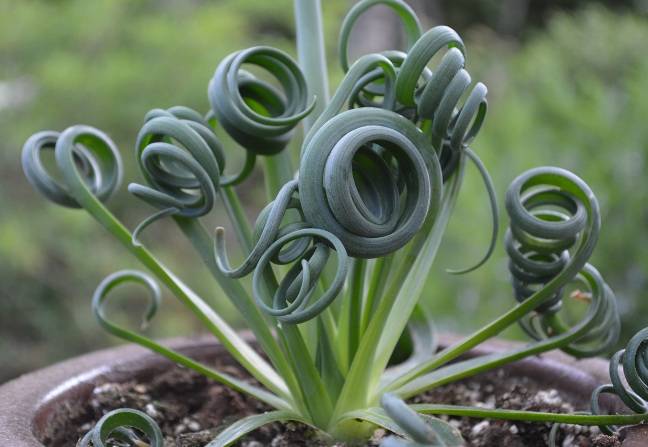
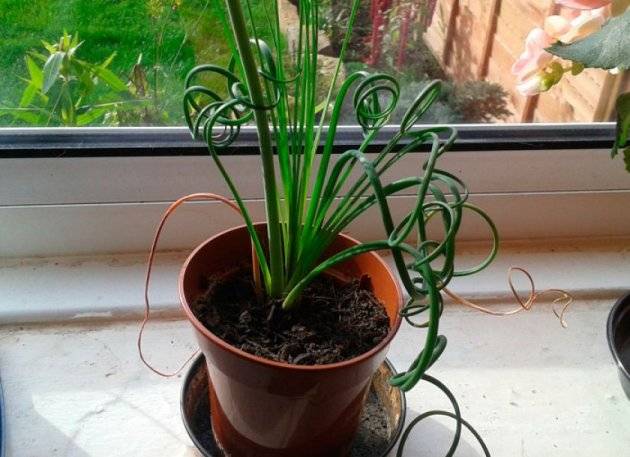
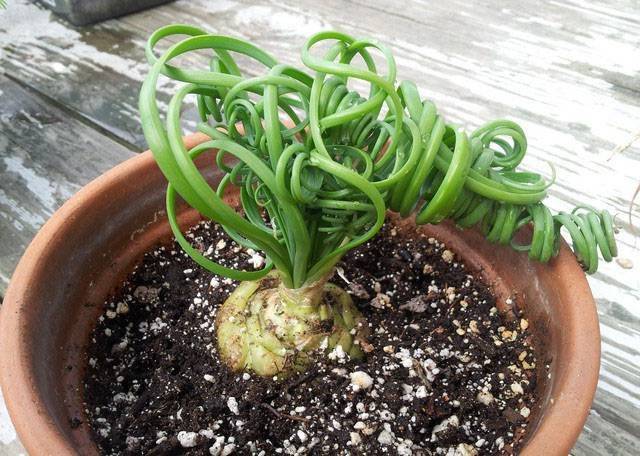

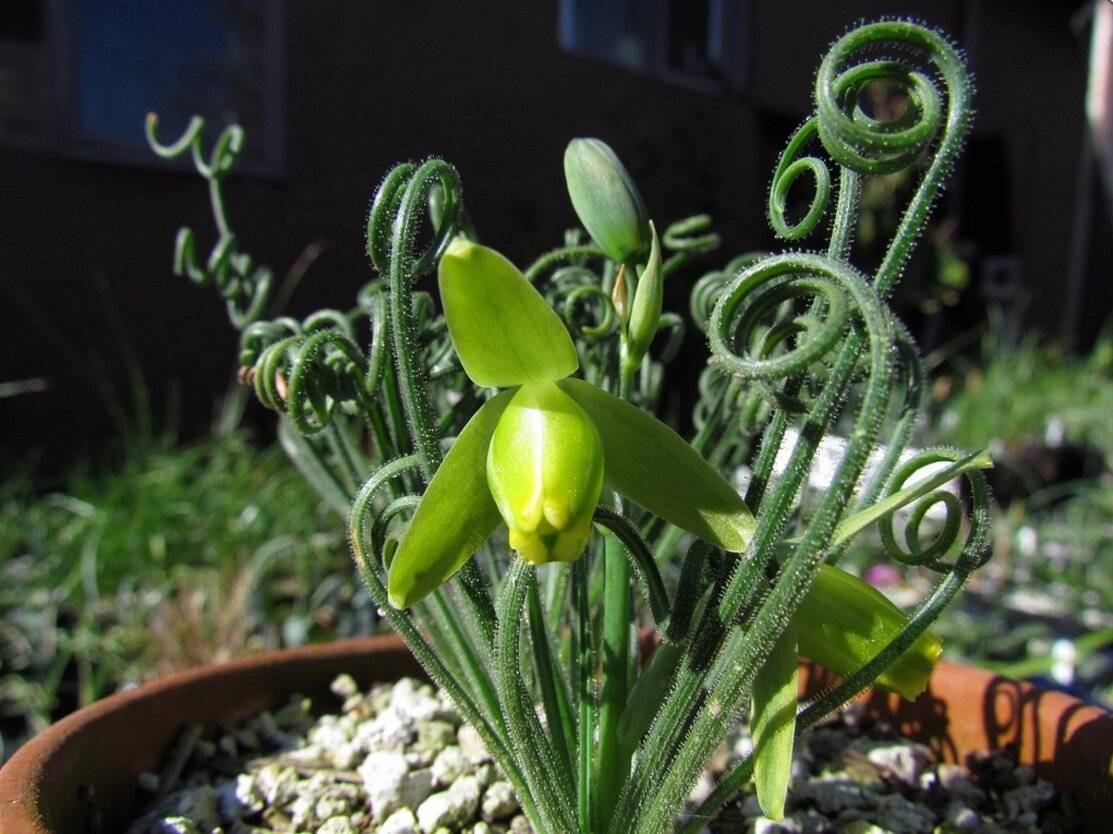



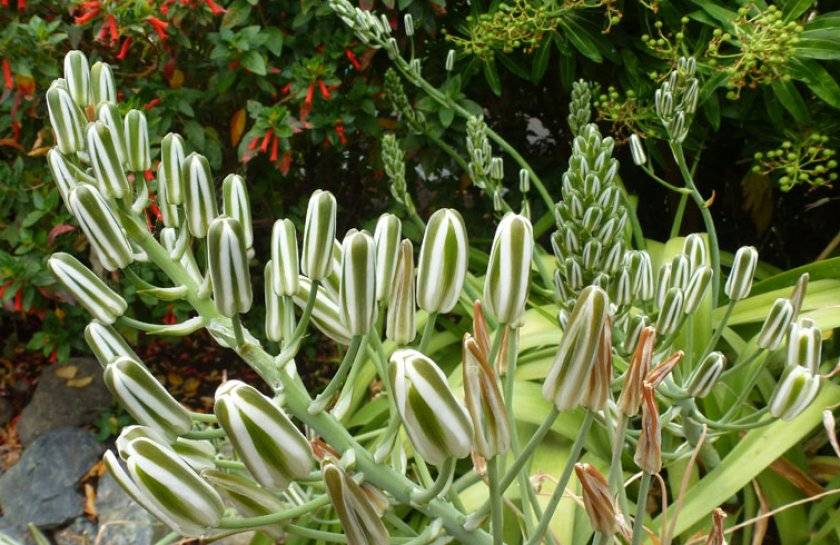
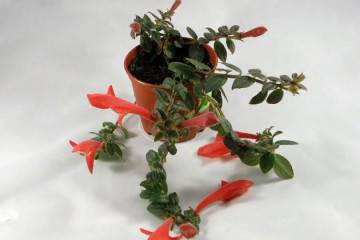
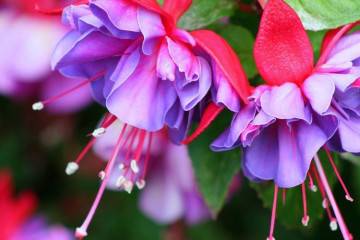
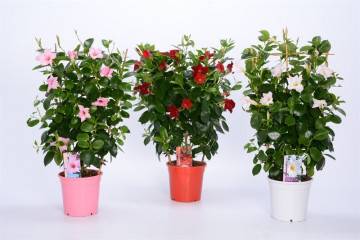




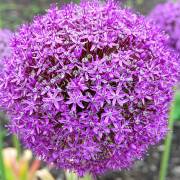

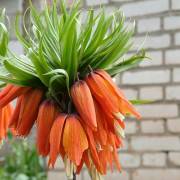


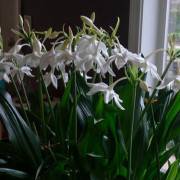
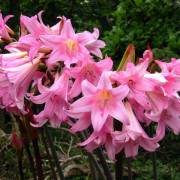
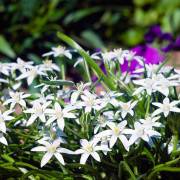

The author is delusional. At the very beginning of the article it is written that abundant watering in summer and rare in winter. Albuka is in the dormant stage just in summer, and the bulb will rot from abundant watering. I didn't even read further